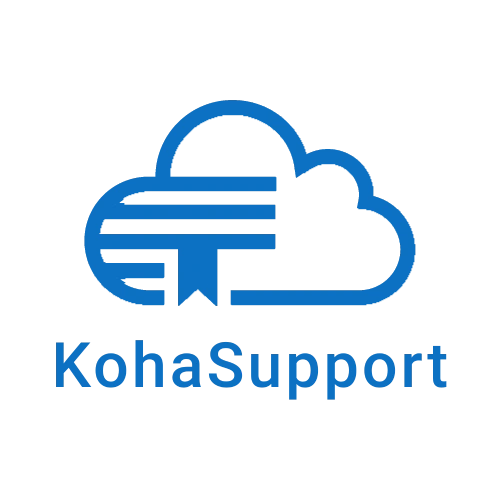Koha vs. Sierra: Comparing Two Leading Library Management Systems
Koha and Sierra are both comprehensive Integrated Library Systems (ILS) used by public, academic, and special libraries around the world. While Koha is a widely adopted open-source solution, Sierra is a commercial ILS developed by Innovative Interfaces (a part of Clarivate). Each system has unique strengths depending on a library’s size, budget, technical capacity, and strategic goals.
This comparison outlines key differences to help libraries determine which platform is the better fit for their needs.
Overview
| Feature | Koha | Sierra |
|---|---|---|
| Licensing Model | Open source, free to use | Commercial, proprietary |
| Customizability | High (themes, plugins, APIs) | Limited; customization via vendor |
| Scalability | Scales well for small to large libraries | Designed for large, complex libraries |
| User Interface | Modern, responsive, web-based | Functional; varies by module |
| Integration Flexibility | Strong API and plugin support | Vendor-controlled integrations |
| Vendor Support | Multiple providers globally | Exclusive to Innovative Interfaces |
| Community & Development | Global, open-source community | Vendor-led with user consortia input |
1. Cost and Licensing
Koha is open source and free to use, making it a cost-effective option for libraries with limited budgets. While many libraries opt for commercial support, the absence of licensing fees can significantly reduce total cost of ownership.
Sierra, as a proprietary solution, involves licensing, hosting, and support fees. These costs can be considerable but come with the benefit of centralized vendor support and a long-standing commercial development roadmap.
Verdict:
-
Koha: More budget-friendly and flexible in vendor selection.
-
Sierra: Higher upfront and recurring costs but includes enterprise support
2. Flexibility and Customization
Koha offers a high degree of flexibility. Libraries can install plugins, modify workflows, adjust the interface, and develop custom features using open APIs and its open codebase.
Sierra allows some customization, but libraries are generally dependent on the vendor for major changes. While configuration options exist, extending functionality usually requires working within vendor-provided frameworks or purchasing additional modules.
Verdict:
-
Koha: More adaptable to diverse needs and workflows.
-
Sierra: More structured but less flexible.
3. Scalability and Performance
Sierra was built for large, complex library environments—such as multi-branch public systems or academic consortia—with a strong focus on performance, stability, and vendor-managed scalability.
Koha is scalable across a wide range of library types. It supports single-branch, multi-branch, and even consortial setups but may require technical planning and support to match Sierra’s performance at scale.
Verdict:
-
Koha: Scales well, especially with proper infrastructure.
-
Sierra: Optimized for large-scale enterprise deployments.
4. User Interface and Staff Experience
Koha features a modern, web-based interface for both staff and patrons. It is intuitive and easy to navigate, with customizable layouts and OPAC themes.
Sierra has a more traditional interface, with dedicated client software for some staff functions and web-based OPACs. While functional, it may be less intuitive without training, especially for new staff.
Verdict:
-
Koha: More user-friendly and modern out of the box.
-
Sierra: Functional and robust, though less intuitive.
5. Integrations and Interoperability
Koha supports integrations with payment gateways, discovery layers (e.g., VuFind, EBSCO), SAML/LDAP authentication, and self-service tools. Its open nature makes interoperability a core strength.
Sierra offers integration options, particularly with other Clarivate products (Encore, EDS, etc.), but these are often tied to additional licensing or vendor agreements.
Verdict:
-
Koha: More open integration paths.
-
Sierra: Integrated ecosystem—best suited to existing Clarivate users.
6. Search and Discovery Features
Koha includes flexible search tools with full MARC support, keyword indexing, and faceted browsing. It supports external discovery layers and multi-format searching.
Sierra’s discovery experience depends heavily on companion products like Encore. The native OPAC is functional but less customizable.
Verdict:
-
Koha: Offers more flexibility with search tools and OPAC design.
-
Sierra: Strong when paired with commercial discovery tools.
7. Community and Development Model
Koha has a vibrant global open-source community with contributors from libraries, vendors, and independent developers. Updates are frequent, and decisions are community-driven.
Sierra follows a commercial development model, with enhancements led by the vendor and influenced by user consortia such as IUG (Innovative Users Group).
Verdict:
-
Koha: Transparent, community-led innovation.
-
Sierra: Centralized development with structured roadmap.
Summary
| Criteria | Koha | Sierra |
|---|---|---|
| Licensing Model | Open source, no licensing fees | Proprietary, requires paid licenses and support |
| Best For | Small to mid-sized libraries, budget-conscious institutions | Large public, academic, or consortial libraries |
| Customizability | High – supports plugins, theming, and code-level modifications | Moderate – customization often requires vendor intervention |
| User Interface | Modern, web-based, easy to use | Functional, less intuitive, some modules require desktop clients |
| Hosting Flexibility | Self-hosted, vendor-hosted, or cloud-based (e.g., AWS) | Vendor-hosted or on-premises via contract |
| Integration and APIs | Strong integration options with REST APIs and external tools | Best suited to integrations within the Clarivate ecosystem |
| Scalability | Scales well with proper configuration | Designed for high-volume, enterprise-scale usage |
| Support Model | Multiple vendors and active global community | Centralized vendor support (Innovative Interfaces) |
| Development Model | Community-led with frequent updates and contributions | Vendor-led, with updates tied to commercial roadmap |
| Cost Profile | Low-cost; free software with optional paid support | High-cost; includes license, support, and upgrade fees |
Final Thoughts
Both Koha and Sierra are mature, powerful ILS platforms. Koha excels in affordability, flexibility, and community support, making it ideal for libraries with limited budgets or a desire for system control. Sierra provides enterprise-grade reliability, deeper integrations with Clarivate tools, and consistent vendor support—ideal for larger institutions that prioritize stability and comprehensive commercial backing.
